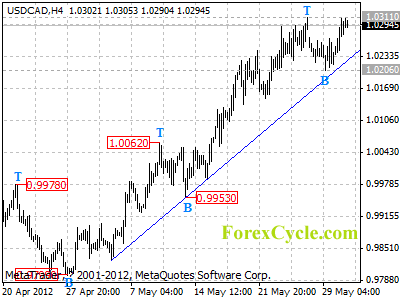By The Sizemore Letter
The following is a review and analysis of Exceptional People: How Migration Shaped Our World and Will Define Our Future, by Ian Goldin, Geoffrey Cameron and Meera Balarajan. In a U.S. election year, the subject of immigration is a controversial topic; kudos to the authors for stirring up a little controversy.
 “We live in a dynamic age of global integration, where the reconnection and mixture of the world’s people is challenging dominant norms and practices in many societies,” write Goldin, Cameron and Balarajan. “Disintegration and integration are simultaneous and interwoven. Cultural codes adapt. New economies emerge. Innovation prospers. Social institutions struggle to adapt.
“We live in a dynamic age of global integration, where the reconnection and mixture of the world’s people is challenging dominant norms and practices in many societies,” write Goldin, Cameron and Balarajan. “Disintegration and integration are simultaneous and interwoven. Cultural codes adapt. New economies emerge. Innovation prospers. Social institutions struggle to adapt.
“To many, the challenges associated with migration are characteristic of our age of postmodernism, multiculturalism, and aspiring cosmopolitanism. Some are nostalgic for an illusory past when people had more in common… Outsiders have always encountered opposition from their adoptive societies. Nevertheless, the direction of history points to the persistent expansion in the boundaries of community. Our cultural and political frontiers have gradually receded.”
The authors use eloquent words to describe a delicate topic. Immigration—legal or otherwise—is a lightning rod, particularly in an election year. It could be lumped with politics and religion as a subject best not discussed at the dinner table unless, of course, you enjoy a good case of heartburn.
Immigration is also a subject in which political and ideological lines tend to get a little blurry. Neither party has a coherent platform on the issue. In the Republican Party, there are two distinct camps: the “pro-business” party elite who favor a looser immigration policy and the “blood and soil” base who would like to see the border sealed air tight. For the business lobby, a liberal immigration policy means abundant and affordable labor. But at the nativist grassroots level, restricting immigration has become a do-or-die mission to preserve American values; taking a soft line is something tantamount to treason. If it were possible to feel pity for a politician, one might feel sorry for a Republican candidate attempting to navigate this minefield. You need the votes of populists to get elected, but you also need the campaign donations of the business community. You can’t keep everyone happy, and there is not a lot of room for compromise.
While immigration is less of a campaign issue for Democrats, the Democratic Party is no less conflicted on the subject. As a party dedicated to looking after the downtrodden, supporting the plight of immigrants only makes sense. But this is also the same party that supports organized labor, and cheap immigrant labor is anathema to unions. One’s liberal heart might bleed, but it won’t matter much if you need union support to get elected. Furthermore, immigrants themselves cannot vote (at least not until naturalized as citizens), whereas union supporters do. When push comes to shove, it’s not hard to see which way most Democrats will vote.
I tend to take a contrarian view on immigration: given the demographic challenges the country faces, America needs more of it—a lot more of it. Most politicians—and economists too, for that matter—only look at the “supply” side of the equation, viewing immigrants as labor inputs. I tend to focus instead on the “demand” side, viewing immigrants as consumers. Contrary to rantings of many a radio talk-show host, immigrants do not “send all of their money to (fill-in-the-blank name of country).” Quite a bit of it gets spent here. And given the dearth of consumer demand in the years following the 2008 crisis, we’ll take consumer demand from any source we can get.
With all of this as an introduction, in the pages that follow we are going to review an insightful new book on the subject of immigration by Ian Goldin, Geoffrey Cameron and Meera Balarajan: Exceptional People: How Migration Shaped Our World and Will Define Our Future.
Exceptional People is an exceptional book. It is part history book part psychological profile and part political manifesto for free trade and free movement of people. The authors repeatedly stress the point that the movement of ideas, goods and services, and—yes—people has been the driving force for human progress over the centuries. The very idea of civilization itself—people living together in community—involved migration. And the future, however it might unfold, will be defined by how trade and migration are managed today. As the authors point out, immigrants to the United States founded many of the cutting edge technology firms that have defined the past decade, including Google ($GOOG), Intel ($INTC), PayPal, eBay ($EBAY), and Yahoo ($YHOO). And more than a quarter of all global patent applications from the United States are filed by immigrants—even though immigrants make up less than 12 percent of the population. A world with less immigration will be a world with less innovation.
The Economic Arguments for Immigration
“International migration pays dividends to sending countries, receiving countries, and migrants themselves,” the authors explain. “In receiving countries, it promotes innovation, boosts economic growth, and enriches social diversity, and it is a boon for public finance. Sending countries have their economies stimulated by the financial and social feedback of migrant networks. Migrants reap the welfare benefits of higher wages, better education, and improved health when they move to relatively more developed countries.”
If all of this is true and immigration is such a wonderful thing, then why do so many people feel threatened by it? As the authors explain, immigration suffers from the same primary challenge as free trade. The benefits are spread out across the general population and are difficult to isolate and measure, whereas the costs tend to be highly visible and localized.
Yes, immigration expands the economy and helps keep inflation in check for all of us; but if you are a directly competing with immigrant labor or a taxpayer having to fund the construction of new schools in your area to educate the children of immigrants, you might not particularly care. (In the same sense, we all benefit from low-priced imports, but for the small minority who find their job “outsourced” the cost is devastating.)
It is an often-used argument that immigrants do jobs that Americans won’t do. Whether this is precisely true or not is debatable; many jobs that Americans “won’t” do might get done at the right price. This is really an irrelevant point, however. As the authors explain, “Low-skilled foreign workers often provide services—such as home care or child care—that release skilled workers into the labor market.”
Yes, but what does this actually mean? As they continue, “When a low-skilled migrant from Mexico moves to California and offers affordable child care, a mother staying at home is released to join the workforce. Through the movement of one person, two people enter the workforce, and they will both earn wages that are spent on goods and services. Migration produces its own multiplier effects. Such indirect and second-order effects of migration are still underspecified, and the overall contribution of migrants to economic growth is therefore underestimated.”
Well said. It’s not so much that low-skilled immigrants do jobs that Americans won’t do; it’s more like they create jobs that didn’t exist before. Without the presence of affordable immigrant labor, Americans might simply do their housecleaning and yard work themselves, which takes time away from more productive activities.
Of course, not all immigrants are low-skilled. “Highly skilled migrants typically work in growing sectors of the economy, or in areas such as health care, education, and information technology that are short of native workers.” One need only look at the diverse workforces of technology hubs like Silicon Valley or Austin, Texas—or simply visit their local hospital—to understand what the authors are saying.
Immigrants are also beneficial to the countries they leave behind. In addition to sending cash remittances to family, immigrants also often return home with knowledge and experience from their time in a foreign country. The authors gave an example that I personally found fascinating. Being married to a Peruvian, I make several trips to Peru each year. Scattered around Lima is a chain of chicken restaurants called Norky’s.
Frankly, I had never thought twice about the restaurant. The food is good, but then, so is most food in Peru. (If you’ve never been to a Peruvian restaurant, find one. Order lomo saltado and wash it down with a cold glass of chicha morada.) The authors give an interesting account of the restaurant chain’s founding:
“The incentives for brain gain in sending countries may also be supported by skilled migrants who have worked abroad and return home to foster new industries. The point is illustrated by the story of Luis Miyashiro, an entrepreneur in Peru.
“Miyashiro is a Peruvian national who moved to Japan for several years under the Nikkeijin visa program, designed to attract those with ancestral connections to work in Japan. After several years in Japan, he returned to Lima and founded Norkys, a chain of chicken restaurants. The new chain renovated the food-stand concept that is popular in Lima by adding Japanese standards of cleanliness and efficiency. The new fast food chain was launched with ideas and capital from Japan, and it was the first of its type in an Andean country.
“The example of Norkys exemplifies how return migration can stimulate local development, and it also illustrates the transmission of ‘social remittances’—‘ideas, behaviours, identities and social capital that flow from receiving-to sending-country communities.’”
For every household name like Norky’s (well, household in Peru, anyway), there are countless smaller success stories.
Immigration: Historical Perspective
Liberal attitudes towards immigration are not a libertarian pipedream, nor are they a trendy new theory cooked up in an ivory tower. The authors note that Francesco de Vitoria (1492-1546), considered by many to be the founder of international law, expressed a popular view in his day when he wrote that “It was permissible from the beginning of the world, when everything was in common, for anyone to set forth and travel wheresoever he would.”
These views continued to grow in popularity throughout the age of exploration, colonial era, and even the Industrial Revolution. As the authors write, “This first era of globalization was accompanied by tectonic movements of people, who took advantage of global transportation networks to search for greater opportunity and security… A doctrine of economic liberalism prevailed in the new, global economy: it was believed that people, goods, and capital should be free to move where they would produce the highest returns.”
Alas, it wouldn’t last forever. By the early 1900s, attitudes towards immigration had started to shift. “The dramatic international population movements of the nineteenth century were gradually eclipsed as war, nationalism, and increasingly effective state bureaucracies led to the introduction of new restrictions on migration.”
When Europe tore itself apart in the First World War, open borders were one of the casualties of war. And conditions didn’t improve with the coming of peace. “The peace that followed World War I was fragile, and nationalism and economic insecurity defined the priorities of European states. Trade protectionism returned with a vengeance, and economic and political failure was often blamed on foreigners.”
Of course, trade protectionism exacerbated the Great Depression and helped lead to World War II. It wasn’t until after the war that policymakers began to seriously consider immigration again. But during this second age of globalization, things would be different. Immigration would not be considered a God-given right of mankind, but rather as an issue to be managed by government.
Parting Thoughts
For many readers, Exceptional People will be controversial. As I noted at the beginning of this article, immigration is a divisive issues that tends to get an emotional response. I encourage our readers to give the book a read and to keep an open mind. I am certainly not an ideologue and concede that in the age of the modern welfare state immigration is more expensive to receiving countries than it used to be. But at the same time, the economic issues facing the country are different than those of ages past.
In America—and even more so in Europe and Japan—how will the state be able to keep its pension and health promises to retiring workers without a steady stream of new immigrant workers contributing to the system? How can we keep the economy growing when the Baby Boomers—the biggest and richest generation in history—are spending less and saving for retirement?
There are no perfect solutions to these problems, and immigration alone will not solve them. But given the severity and importance of the issues, we can use every bit of help we can get.
 Tradervox (Dublin) – The south pacific dollars have continued to lose against most currencies as concerns over Europe took a new twist with Greece now taking a back seat and Spain getting into the limelight as it struggles to rescue its banks. The turmoil in Europe has led to the decline in demand for currencies associated with growth which has caused the Aussie to drop to six-month low.
Tradervox (Dublin) – The south pacific dollars have continued to lose against most currencies as concerns over Europe took a new twist with Greece now taking a back seat and Spain getting into the limelight as it struggles to rescue its banks. The turmoil in Europe has led to the decline in demand for currencies associated with growth which has caused the Aussie to drop to six-month low.






 Tradervox (Dublin) – The AUD/USD cross has been experiencing a bearish movement following the recent risk aversion in the market. While risk aversion in the market might continue for some time as Europe struggles with the debt crisis, the cross bearish trend might be limited following some fundamental and technical indicators showing that the current drop is excessive.
Tradervox (Dublin) – The AUD/USD cross has been experiencing a bearish movement following the recent risk aversion in the market. While risk aversion in the market might continue for some time as Europe struggles with the debt crisis, the cross bearish trend might be limited following some fundamental and technical indicators showing that the current drop is excessive.